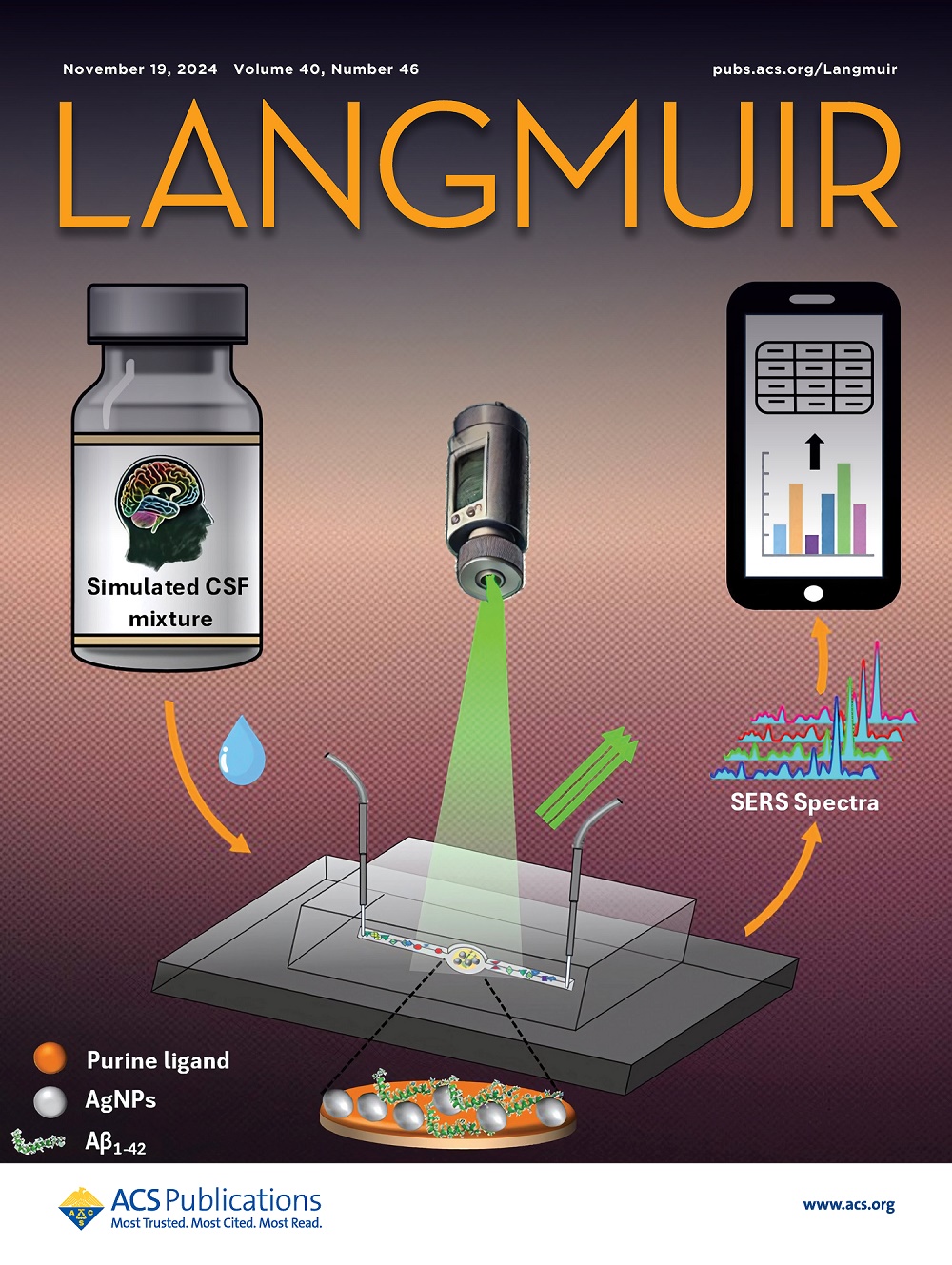具有C∞对称的二维界面上苯基振动和频率产生特征的第一性原理预测
IF 3.7
2区 化学
Q2 CHEMISTRY, MULTIDISCIPLINARY
引用次数: 0
摘要
振动和频产生(SFG)光谱能够探测界面分子的取向。传统的方法假设控制SFG信号强度的超极化张量可以根据单个官能团的点群对称性来确定。然而,相邻基团之间的振动耦合破坏了正模对称。这使得很难准确地解释SFG光谱,特别是苯基(C6H5-)基团。在本研究中,我们利用密度泛函理论(DFT)计算预测了具有C∞对称性的二维界面上C6H5基团的SFG谱特征。利用模型化合物如碘苯(C6H5-I)和各种取代苯基衍生物,我们系统地研究了与邻近原子的振动耦合对3000-3100 cm-1区域芳香族C-H伸展模式的影响。如果取代基缺乏能够与苯环振动耦合的碳氢键,则计算得到的极化率和偶极导数张量与C2v点群的A1和B1对称性很好地吻合。然而,当取代基在苯环最近或次近的位置含有C-H基团时,会产生明显的C2v对称性偏差,导致SFG光谱的峰位置移位和强度变化。这些发现强调了传统的基于c2v的SFG分析在确定聚合物界面上苯基的倾斜角方面的局限性,并强调了将振动耦合效应纳入SFG光谱解释的必要性。本研究提出的方法为准确预测和表征界面分子取向提供了更严格的框架,并可扩展到其他复杂系统,其中振动相互作用起着至关重要的作用。本文章由计算机程序翻译,如有差异,请以英文原文为准。

First-Principles Prediction of Vibrational Sum Frequency Generation Features of Phenyl Groups at the 2D Interface with C∞ Symmetry
Vibrational sum frequency generation (SFG) spectroscopy is capable of probing the orientation of the interfacial molecules. A conventional approach assumes that hyperpolarizability tensors governing the SFG signal intensity can be determined based on the point group symmetry of individual functional groups. However, vibrational coupling among neighboring groups breaks the normal mode symmetry. This makes it difficult to accurately interpret SFG spectra, particularly for phenyl (C6H5-) groups. In this study, we employed density functional theory (DFT) calculations to predict the SFG spectral features of C6H5 groups at two-dimensional interfaces with C∞ symmetry. Using model compounds such as iodobenzene (C6H5–I) and various substituted phenyl derivatives, we systematically investigated the effect of vibrational coupling with neighboring atoms on the aromatic C–H stretching modes presented in the 3000–3100 cm–1 region. If the substituent group lacks C–H bonds capable of coupling with the phenyl ring vibrations, the computed polarizability and dipole derivative tensors align well with the A1 and B1 symmetries expected from the C2v point group. However, when the substituent contains C–H groups in the nearest or next-nearest positions to the phenyl ring, significant deviations from C2v symmetry arise, leading to shifts in peak positions and intensity variations in SFG spectra. These findings underscore the limitations of conventional C2v-based SFG analyses in determining the tilt angle of phenyl groups at polymer interfaces and emphasize the necessity of incorporating vibrational coupling effects for accurate SFG spectral interpretation. The approach presented in this work provides a more rigorous framework for accurately predicting and characterizing interfacial molecular orientations and can be extended to other complex systems, where vibrational interactions play a crucial role.
求助全文
通过发布文献求助,成功后即可免费获取论文全文。
去求助
来源期刊

Langmuir
化学-材料科学:综合
CiteScore
6.50
自引率
10.30%
发文量
1464
审稿时长
2.1 months
期刊介绍:
Langmuir is an interdisciplinary journal publishing articles in the following subject categories:
Colloids: surfactants and self-assembly, dispersions, emulsions, foams
Interfaces: adsorption, reactions, films, forces
Biological Interfaces: biocolloids, biomolecular and biomimetic materials
Materials: nano- and mesostructured materials, polymers, gels, liquid crystals
Electrochemistry: interfacial charge transfer, charge transport, electrocatalysis, electrokinetic phenomena, bioelectrochemistry
Devices and Applications: sensors, fluidics, patterning, catalysis, photonic crystals
However, when high-impact, original work is submitted that does not fit within the above categories, decisions to accept or decline such papers will be based on one criteria: What Would Irving Do?
Langmuir ranks #2 in citations out of 136 journals in the category of Physical Chemistry with 113,157 total citations. The journal received an Impact Factor of 4.384*.
This journal is also indexed in the categories of Materials Science (ranked #1) and Multidisciplinary Chemistry (ranked #5).
 求助内容:
求助内容: 应助结果提醒方式:
应助结果提醒方式:


